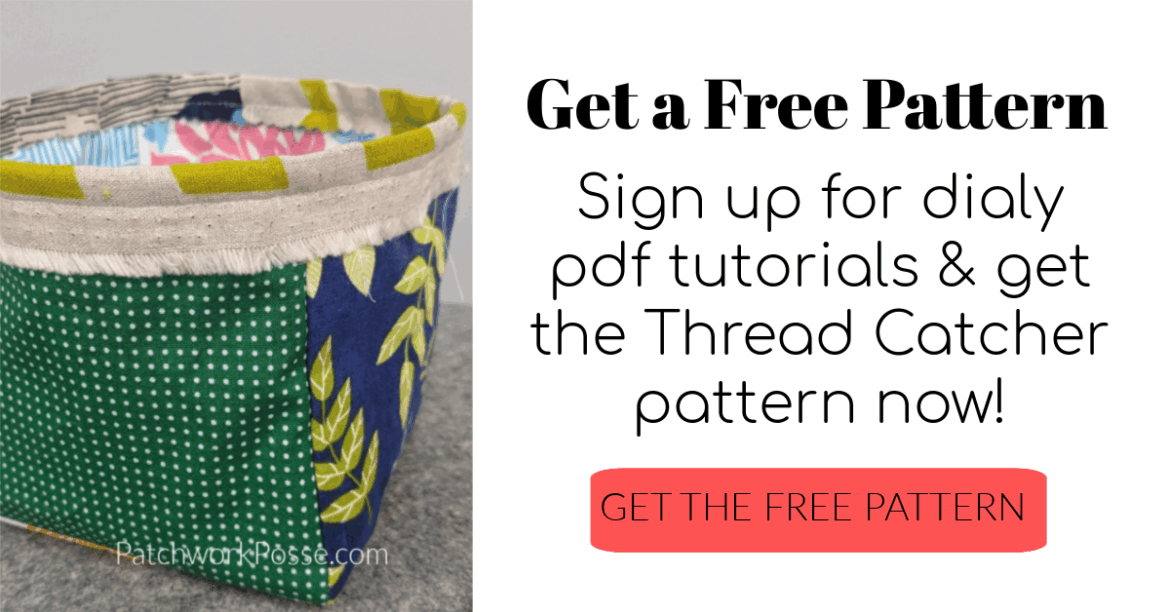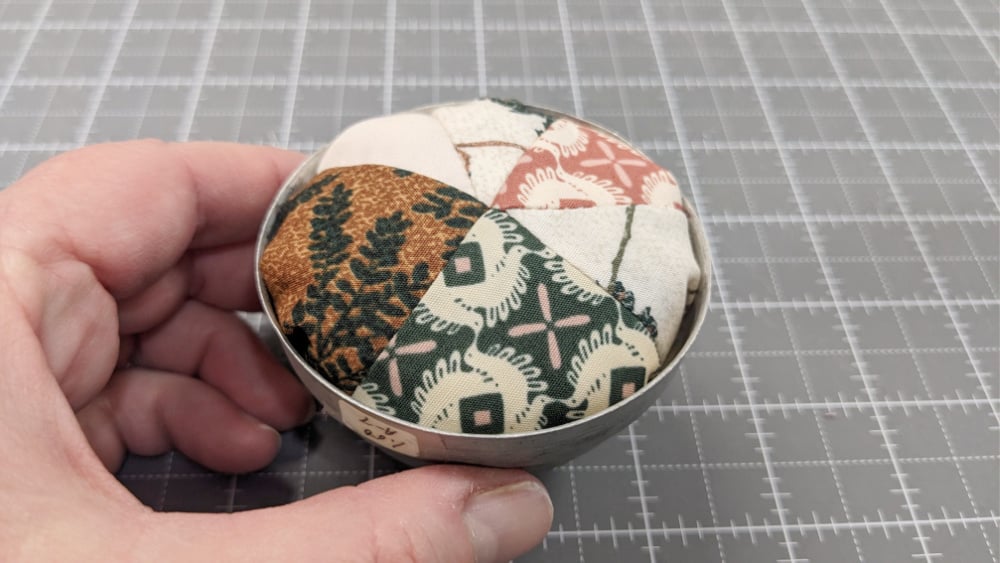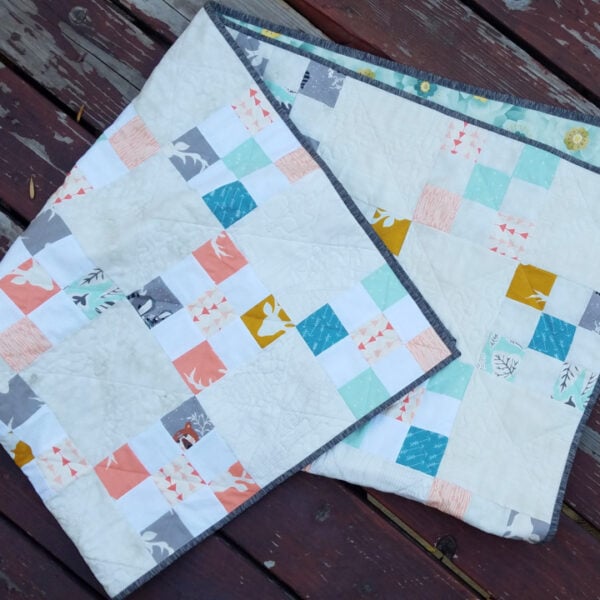If you’re like me, you love finding a project that’s just the right mix of cute, quick, and meaningful—and this little Camera Quilt Block checks all the boxes!
Using the AccuQuilt GO! Camera Block Die designed by Judy Gauthier, you’ll be able to cut out this block with ease and turn it into a charming mini quilt. It’s the perfect project to sew up and hang right next to your favorite photos of family, friends, or even those quilt retreats you never want to forget.
In the video below, I’ll show you exactly how to piece the block step-by-step and give you a simple idea for finishing it into a wall-hanging or display piece.
It’s a great project whether you’re playing with your fabric scraps, making a gift, or just want to try out a fun die from your AccuQuilt collection. Plus, it’s beginner-friendly — even if this is your first time trying a shaped block like this, you’ll be amazed at how it comes together.

Materials and Tools Needed
So grab your die, pull out some fun fabrics, and let’s get sewing. You’ll have a sweet little mini quilt to show off in no time!
- Get the Accuquilt machine here: https://shareasale.com/r.cfm?b=587582&u=719157&m=50439&urllink=&afftrack=
- Get the Camera Die here: https://shrsl.com/4vf4o
- Batting for the block – 10″ x 10″ (this is a great time to use those little bits of batting you have sitting around)
Choosing Fabric & Cutting Your Camera Block
Before you jump into cutting, let’s talk about fabric choices! This is where you can have a little fun and make your camera block unique. The lens section of the camera is the perfect spot for a fussy cut—show off a favorite print, a tiny floral, a novelty fabric, or even a little face or motif that makes the block extra special. It’s a great way to personalize the block if you’re making it for a gift or to hang alongside your own photos.
When selecting fabric for the rest of the camera, think about contrast. You’ll want the camera body, lens, and details like the buttons to stand out from each other. This block looks adorable when you mix different fabrics like solids, tiny prints, or even scraps left over from past projects.
Once you’ve got your fabrics picked out, follow the cutting instructions with the AccuQuilt die. The die makes cutting all those little pieces easy, fast, and accurate—no worrying about measuring weird angles or trimming tiny curves with scissors. Just run it through your cutter, and you’ll have perfectly shaped pieces ready to sew. It’s as simple as that!
Cutting Your Fabric with AccuQuilt

Use the camera die to cut out your pieces. The instructions on the box are actually really good – so just follow them as far as how many pieces you’ll need to cut.

Sewing the Camera Quilt Block
Now that you have your pieces all cut using the Accuquilt – it’s time to sew them together!

Lay the pieces out in the layout that is shown on the block.
Begin sewing them into sections, then into rows. Again, the printed instructions are really good. Just simply follow them!

Add a border to the block
I didn’t want the binding to go right onto the camera (for this project), so I did cut some additional strips and sewed them to the four sides of the quilt block.

Watch How It All Comes Together
In the video below, I’ll walk you through the entire sewing process — from piecing the camera block, to quilting it, and finishing it up with a fun little trick: using the backing fabric as the binding!
This is a great technique if you want a finished edge without adding a separate binding strip, and it gives the mini quilt a clean, simple look.
I’ll show you each step so you can follow along, even if this is your first time sewing this block. Whether you’re making a mini quilt, a wall hanging, or even turning it into a decorative cushion, you’ll see how quick and fun this project really is.

Layer your pieces to machine quilt
After the block and the border were sewn, I layered the batting and the backing fabric to prep for machine quilting.
This is a very simple block and I really didn’t want to over do it – so I kept the quilting simple.

I quilted an few echo lines past the camera as well as quilted inside the camera just to define the spaces or pieces

When the quilting is finished, you’ll need to cut off any batting this showing.
I am planning on rolling the back to the front for the binding.
You can see the whole process of this binding technique here.

Bind with the Backing Fabric
I find this type of binding really simple and quick. I know not everyone likes it, but it works for me.
This project is going to be hanging on the wall so I’m not worried about what binding technique I was going to use.

Trim the backing 1″ past the edge of the quilted top. You can have a smaller binding by cutting it 3/4″ from the edge of the quilted top.
Fold over the backing so it lines right up with the edge of the quilted top. Press if you’d like

Fold this over one more time – it will go right on top of the quilt top just like a typical binding strip.

Use clips or pins to secure the binding in place all the way around the camera mini quilt.

At the corners, fold the binding so it miters. It is a bit fussy, but boss the fabric around so it looks like you want it to. Again, secure it with a clip so it doesn’t come undone.

Stitch the binding down 1/8th inch from the edge of the binding.

Additional Accuquilt projects and resources:
- How to make a flange for your binding
- Magnolia quilt block and wall hanging
- Sewing machine die
- Sew a bucket hat with Accuquilt

Becky Jorgensen is the creative quilter behind Patchwork Posse, the Patchwork Planner and her online quilt group Patchworkers Plus. You can find her patterns in books, magazines, and her quilt membership. Gather your quilting supplies, organize your sewing space, explore the process of disappearing quilt blocks, or finish a free quilt pattern. I'll help you use what you have, finish what you start and make your quilting journey fun!
Follow me here: Facebook, Pinterest, YouTube






